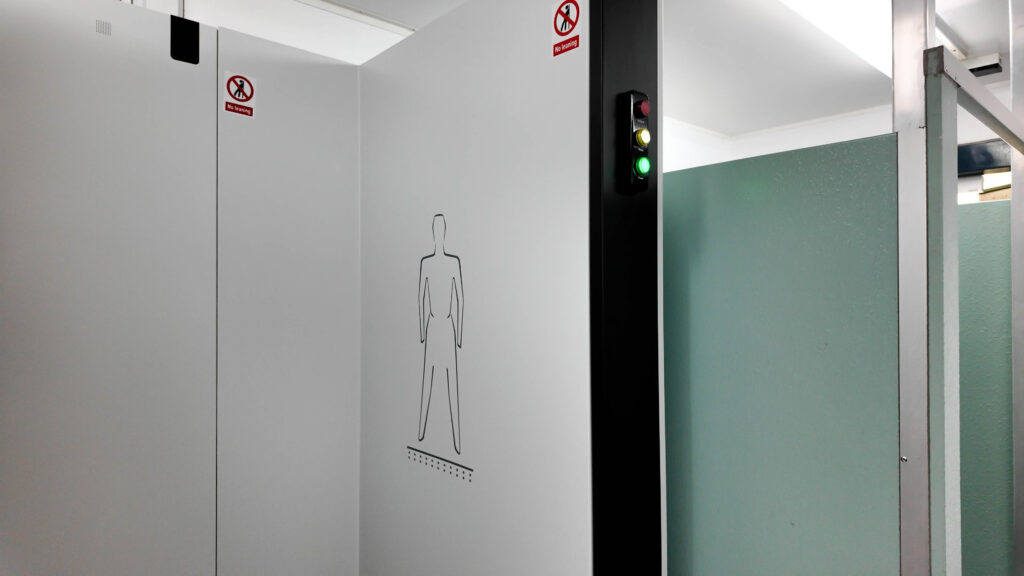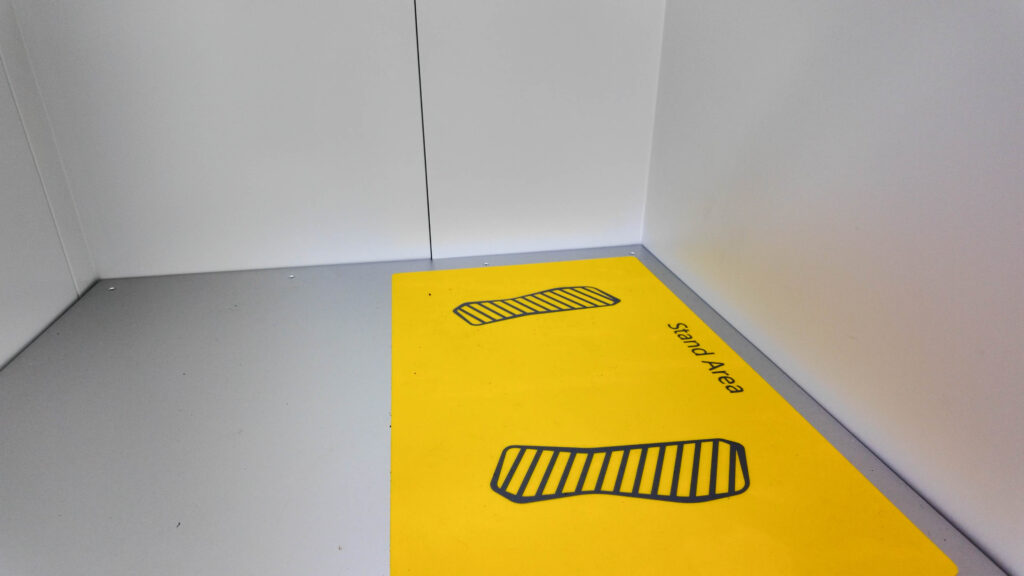Body scanners – its role in correctional centre safety and prisoner welfare
From time to time, you would've seen media coverage about our officers foiling attempts to introduce contraband into correctional centres.
Correctional centres serve an important role in our society by protecting community safety while giving prisoners the opportunity to rehabilitate to prevent further offending.
Contraband makes prisons more dangerous for our officers, the prisoners and visitors, and we work hard to prevent it entering our centres.
Keeping contraband out of prisons isn't straightforward, especially when our officers are dealing with some of the state's most complex and challenging individuals.
Our ongoing wastewater testing shows that drugs are far less common in prisons than in the general community, but we know that people go to extraordinary lengths to introduce contraband, so we are always looking for ways to strengthen our barrier controls.
Introducing the x-ray body scanner
We know that one of the ways contraband is introduced to prisons is by family or friends who attempt to sneak it into centres and give it to prisoners during personal visits. While visitors go through a number of non-invasive security checks and scans to come into centres, some go to extraordinary lengths to avoid detection.
One of the ways we are looking to further crack down on contraband is through a trial of body scanners, which detect organic substances such as powdered drugs, pills and suboxone strips - contraband that our existing barrier controls can struggle to identify, especially if concealed internally.
In May 2023, the Queensland Government passed the Corrective Services (Emerging Technologies and Security) and Other Legislation Amendment Bill 2022 in May, 2023, which allows the use of body scanners. QCS has just commenced a trial of low dose x-ray body scanners to establish the best practice use within our operating models.
Brisbane Women's Correctional Centre is the first prison to undertake the trial, consistent with the recommendations of the Women's Safety and Justic Taskforce final report, Hear Her Voice-Women and Girls' Experiences Across the Criminal Justice System, focusing on the introduction of non-invasive screening technology and ending the practice of removing clothing searches for women prisoners.

Why is BWCC trialling x-ray body scanners first?
Except for Lockyer Valley Correctional Centre, which will have x-ray body scanners included as part of its construction, there are a few reasons why the non-invasive screening technology will be trialled at a women's centre initially.
According to Southern Queensland Correctional Centre General Manager, Chief Superintendent Tamara Bambrick, women come into custody with a history of trauma, with substance abuse, domestic and family violence, and mental health contributing to housing insecurity for many women.
"We know that women have unique needs and challenges," Ch Supt Bambrick said.
"With an estimated 87 percent of women in custody coming from a background of child sexual abuse, physical violence, or domestic violence, and 66 percent experiencing all three offences, providing a less invasive way to ensure contraband is not introduced during a visit is an important step in creating a safe environment.
"By taking a gender-appropriate trauma-informed approach to managing women prisoners, our goal is to offer women the chance to truly rehabilitate and escape the cycle of offending that led to prison. This directly leads to increased community safety by preventing further crime," Ch Supt Bambrick said.
BWCC will trial the x-ray body scanner technology for three months on women, and an evaluation report will be produced to facilitate its rollout to other centres.

When will other correctional centres get the new screening technology?
Once the technology is reviewed within our operating model, a plan will be developed to place body scanners into all Queensland facilities, taking into account the existing infrastructure and operational workflow of each centre. This will include the development of a policy to guide the use of scanners within Queensland correctional centres.
While the scanners are in use in a number of other jurisdictions already, the legislative framework and operational models are different from State to State. This means we need to carefully consider how the scanners fit within our legislation and processes to ensure we use them lawfully and appropriately.
There is a lot to consider before body scanners can be installed in every centre across the state so the safety of our officers and those in our custody aren't compromised.
We will continue to work with our stakeholders to keep them informed of our progress and evaluation report so we can manage the rollout of x-ray body scanners effectively and efficiently in a timely manner.







